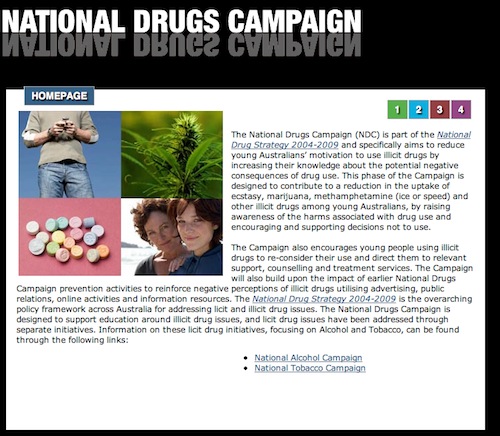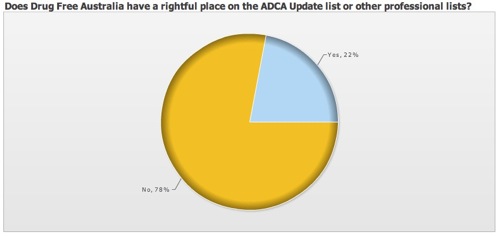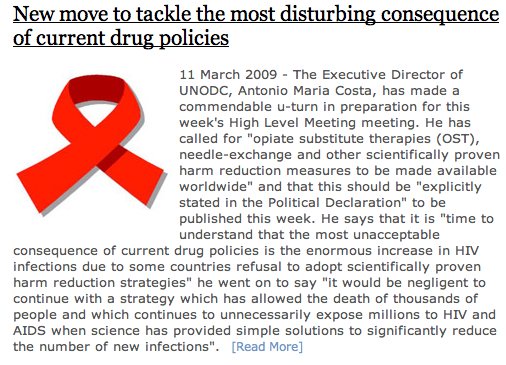I saw the piece reproduced below on the ADCA Update list, and it’s quite a comprehensive look at the opportunities medical marijuana provdes and deconstructs some of the misconceptions around the use of medical cannabis in the USA. It was originally published at the excellent MAPINC:
THE CASE FOR MEDICAL MARIJUANA
In a piece published [1] here last week, Rachel Ehrenfeld reports with dismay that the National Institute on Drug Abuse is presently soliciting proposals from contractors to grow marijuana for research and other purposes. Unfortunately, Ehrenfeld’s misunderstanding of this request for proposals is so monumental that one doesn’t know whether to laugh or cry.
Ehrenfeld suggests that this is some sinister part of “ObamaCare.” “For the first time,” she writes, “the government is soliciting organizations that can grow marijuana on a ‘large scale,’ with the capability to ‘prepare marijuana cigarettes and related products … distribute marijuana, marijuana cigarettes and cannabinoids, and other related products’ not only for research, but also for ‘other government programs.'”
Ehrenfeld spends several paragraphs explaining how this is all the evil brainchild of George Soros, the pet villain of prohibitionists. After all, “Since when is the U.S. government in the business of distributing marijuana cigarettes?”
Since 1978, actually. The federal government has been distributing medical marijuana to a small group of patients for more than [2] three decades via a program known as an IND (for “investigational new drug”). This program has been covered in the media from [3] time to time, and still exists, although it was closed to new enrolment by President George H.W. Bush in 1992. It’s not exactly a state secret.
In addition, under present (thoroughly dysfunctional) rules, scientists doing clinical research on marijuana must obtain the marijuana for testing [4] from NIDA. Since the 1970s, the government has contracted with the University of Mississippi to produce marijuana for this purpose, and all expectations are that the university will get the contract again. In other words, there is nothing new here.
Having completely misconstrued NIDA’s request for proposals as something new and sinister, Ehrenfeld proceeds with a selective, wildly distorted description of research on medical marijuana, claiming, “The evidence about the harm caused by marijuana to the individual user and society is overwhelming.”
In fact, there is a wealth of research that documents marijuana’s medical [5] efficacy and safety, and a vast array of medical and public health organizations that have recognized marijuana’s [6] medical potential.
For the record, let’s consider a bit of what’s been said about medical marijuana by organizations that are presumably not part of the Evil Soros Conspiracy. Bear in mind that this is just a tiny sampling of the material that’s available from respected medical organizations.
. From the 124,000-member [7] American College of Physicians:
“Given marijuana’s proven efficacy at treating certain symptoms and its relatively low toxicity, reclassification [out of Schedule I of the federal Controlled Substances Act] would reduce barriers to research and increase availability of cannabinoid drugs to patients who have failed to respond to other treatments. …
“Evidence not only supports the use of medical marijuana in certain conditions but also suggests numerous indications for cannabinoids.”
. From the [8] American Nurses Association:
“There is a growing body of evidence that marijuana has a significant margin of safety when used under a practitioner’s supervision when all of the patient’s medications can be considered in the therapeutic regimen. …
“There is significant research that demonstrates a connection between therapeutic use of marijuana/cannabis and symptom relief. The American Nurses Association actively supports patients’ rights to legally and safely access marijuana/cannabis for symptom management and to promote quality of life for patients needing such an alternative to conventional therapy.”
. From the Lymphoma Foundation of America, HIV Medicine Association of the Infectious Diseases Society of America and others (in a [9] brief filed with the U.S. Supreme Court):
“For certain persons the medical use of marijuana can literally mean the difference between life and death. At a minimum, marijuana provides some seriously ill patients the gift of relative health and the ability to function as productive members of society.”
And finally, from a study of smoked marijuana as a treatment for HIV-related nerve pain, published in the February 13, 2007, issue of the journal [10] Neurology:
“The first cannabis cigarette reduced chronic pain by a median of 72% vs. 15% with placebo … No serious adverse events were reported. Conclusion: Smoked cannabis was well tolerated and effectively relieved chronic neuropathic pain from HIV-associated sensory neuropathy.”
Marijuana has been used as a medicine for some 5,000 years–maybe longer, actually, but written records only go back that far. In the world of scientific reality–not to be confused with the BizarroWorld inhabited by certain prohibition ideologues–it is both effective at treating a number of troubling symptoms and safer than the pharmaceuticals taken by millions of patients every day. Indeed, as a “recreational” substance it’s vastly safer than booze. But it’s much easier to imagine conspiracies run by billionaires with foreign-sounding names than it is to read and understand the actual research.
This article first appeared at forbes.com. Bruce Mirken, a longtime health writer, serves as director of communications for the [11] Marijuana Policy Project.
REFERENCES
1. http://drugsense.org/url/hrqFXWxS
2. http://drugsense.org/url/EmG1kbx7
3. http://drugsense.org/url/HE4Hi7XI
4. http://www.maps.org/sys/nq.pl?id=1921
5. http://www.mpp.org/assets/pdfs/library/MedConditionsHandout.pdf
6. http://www.mpp.org/library/medical-marijuana-overview.html
7. http://drugsense.org/url/RTJp0V7l
8. http://drugsense.org/url/sPuJf8tI
9. http://drugsense.org/url/bplTeMy6
10. http://www.neurology.org/cgi/content/abstract/68/7/515
11. http://www.mpp.org/
What are your thoughts? It seems a fairly straight down the line treatise to me. It’s a shame this level of defense still needs to be put up against misinformation.



